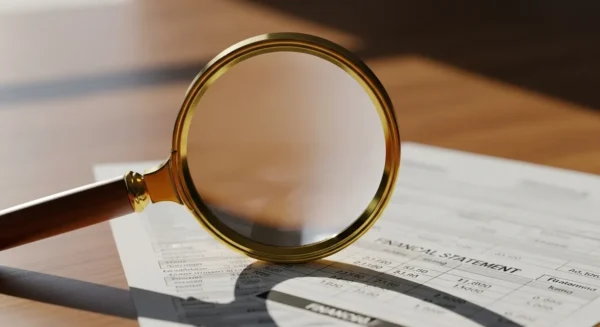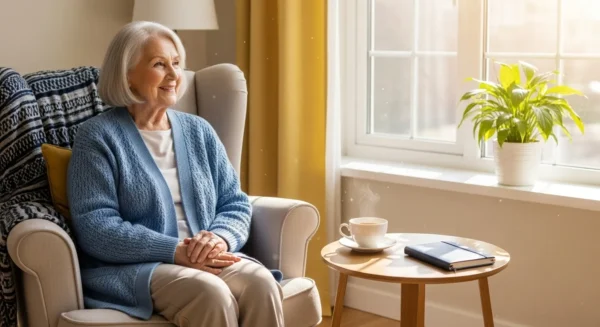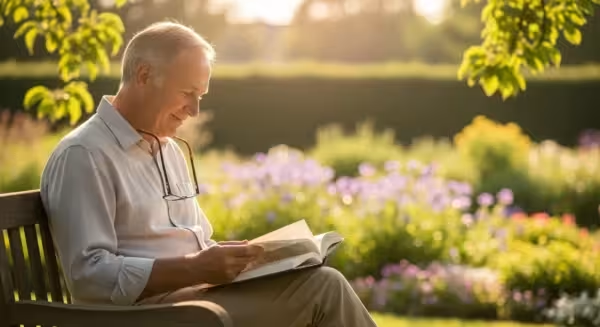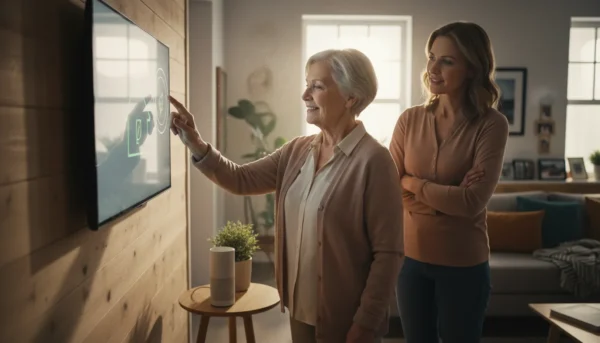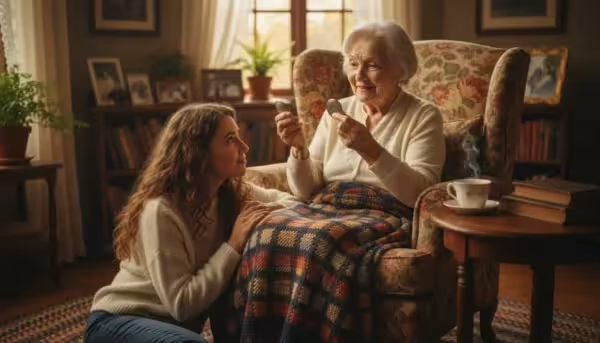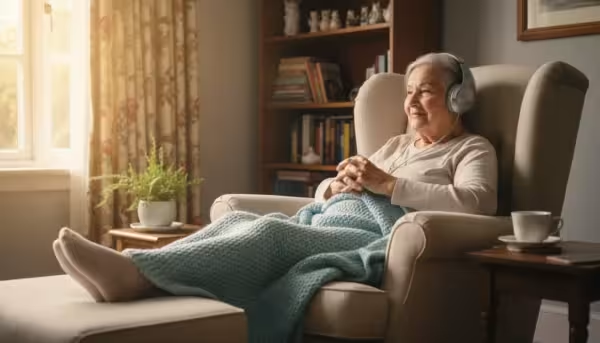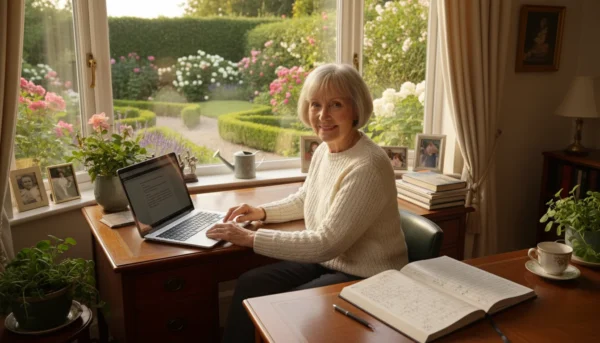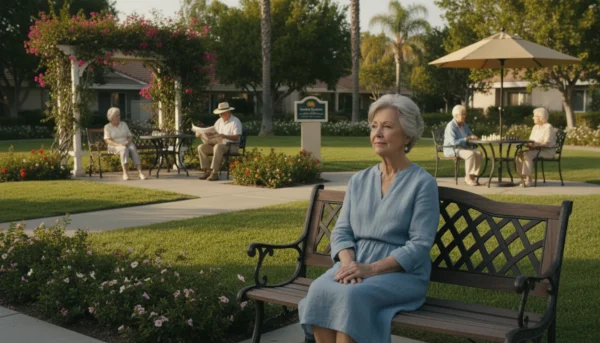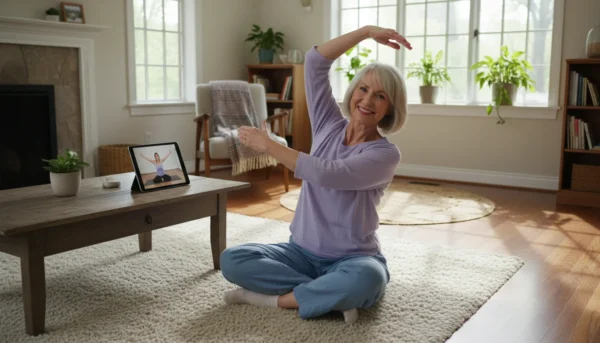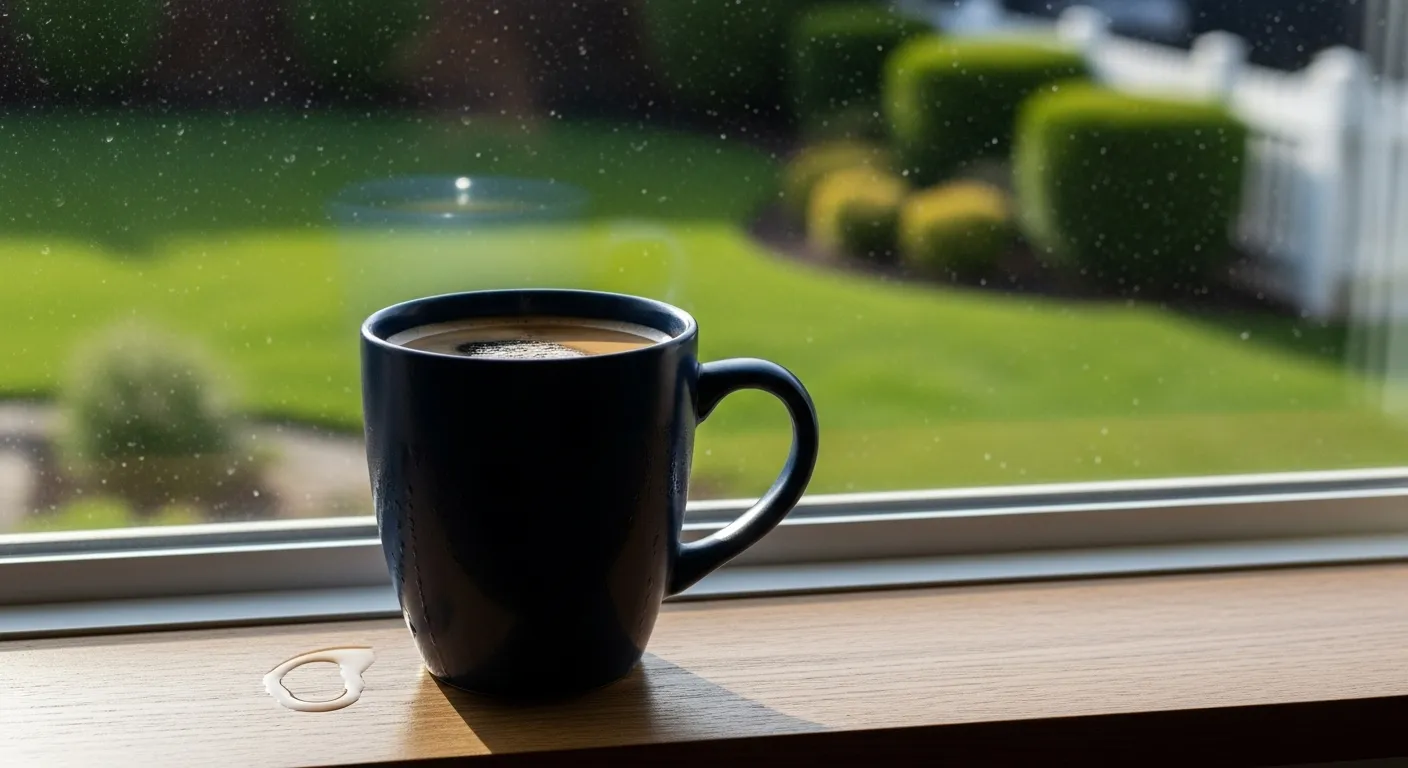
For the first six months after I hung up my hard hat, retirement felt like a perfectly calibrated machine. I’d spent forty years as a civil engineer, a life ruled by blueprints, calculations, and the satisfying certainty of numbers. My retirement was no different. Tuesdays and Thursdays were for golf, nine holes sharp at 8:00 AM. Wednesdays were for lunch with the guys, other newly-unleashed executives. Saturdays were for the yard, a patch of suburban green I manicured with geometric precision. It was orderly. It was predictable. And, if I’m being honest with you, it was becoming soul-crushingly boring.
My wife, Eleanor, saw it before I did. She’d watch me stare out the window in the afternoons, a cup of coffee growing cold in my hands. “You look like you’re calculating the structural integrity of the birdbath again, Arthur,” she’d say with a gentle smile. She was right. I had all the free time in the world, but my mind, so used to solving problems, had run out of them. The quiet of the house wasn’t peaceful; it was empty. I felt less like a man enjoying his golden years and more like a tool left on a shelf, slowly gathering dust.
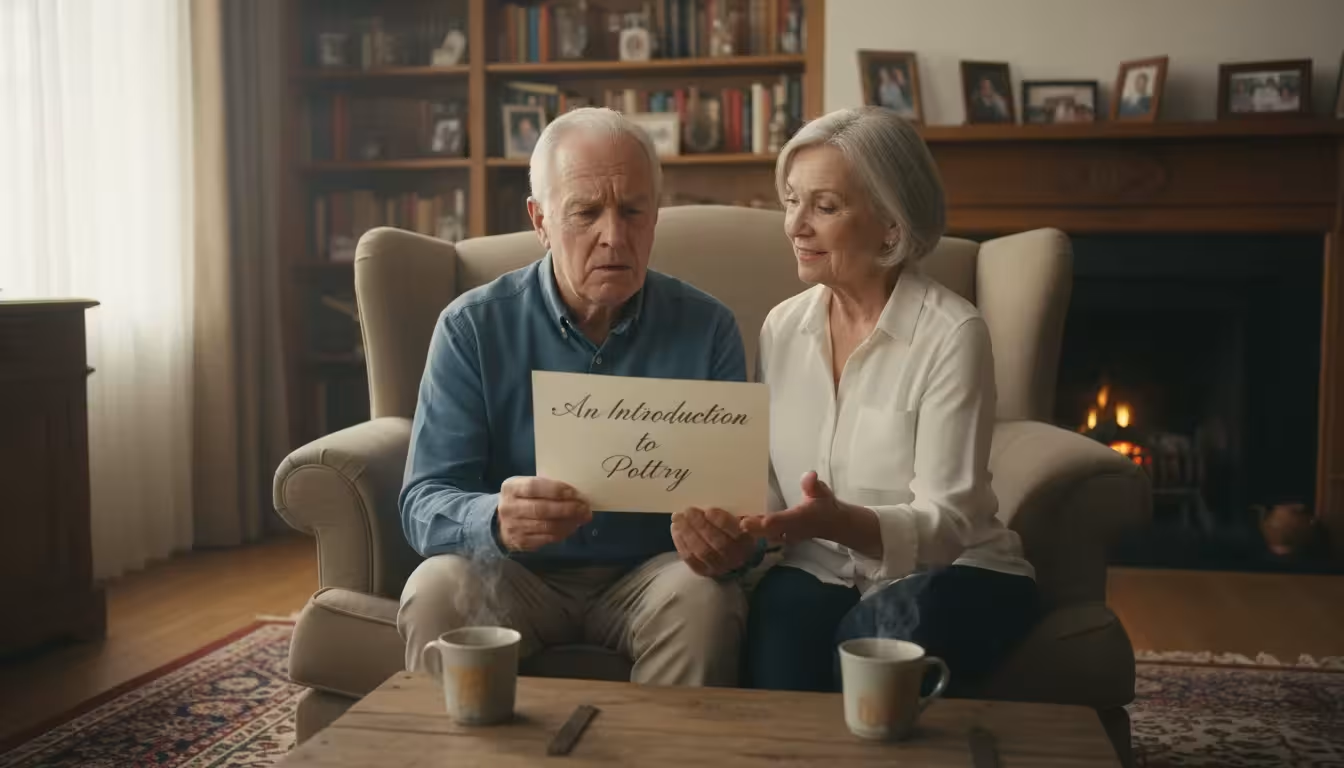
A Birthday Gift Wrapped in Clay
For my sixty-seventh birthday, Eleanor handed me a long, flat box. I was expecting a new putter or perhaps a subscription to a historical magazine. Instead, I pulled out a gift certificate. The fancy script read: “An Introduction to Pottery. Six Tuesday Evening Sessions. The Community Arts Center.”
I stared at it, then at her. “Pottery?” I asked, the word feeling foreign in my mouth. “Eleanor, I build bridges. I don’t make… mud pies.”
She just laughed. “Exactly. You need to get your hands dirty. You need something without a right answer.”
I protested, of course. I argued that my golf game was on a Tuesday. I claimed I didn’t have an artistic bone in my body. But there was a look in her eyes, a mix of hope and challenge, that I couldn’t refuse. So, with the enthusiasm of a man heading to a root canal, I walked into that brightly lit studio the following Tuesday, my hands feeling awkwardly clean.
The room smelled of damp earth and something vaguely sweet, like wet stone. People of all ages were milling about, wiping clay-caked hands on their aprons. I felt like an imposter in a foreign land. Our instructor, a woman named Maria with kind eyes and clay under her fingernails, showed us the basics: how to wedge the clay to get the air bubbles out, how to slam it onto the center of the wheel. It all looked so simple when she did it. Deceptively simple.
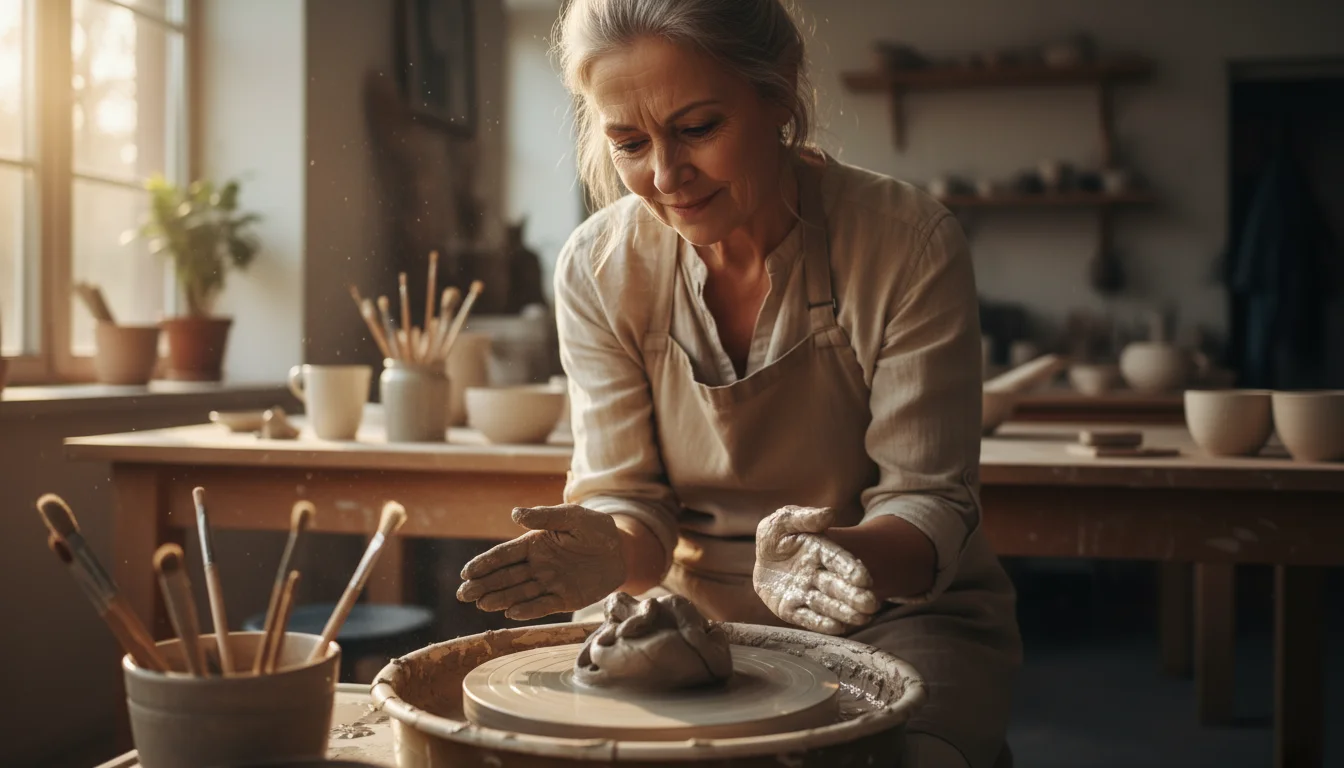
Wrestling with the Wheel (And Myself)
Let me tell you, for any of you considering starting a hobby as a retiree, be prepared to feel like a complete beginner. And for someone like me, who had spent a lifetime being the expert, it was profoundly humbling. My first attempt to center the clay was a disaster. The lump wobbled like a drunkard before flying off the wheel and splatting against the splash pan. My second attempt turned into a lopsided, watery mess that collapsed in on itself.
I looked around the room. A young woman to my left was already pulling up the walls of a graceful cylinder. An older gentleman across from me, who I later learned was a retired dentist, was calmly trimming the base of a nearly perfect bowl. My station looked like a mudslide. Frustration, hot and sharp, pricked at me. This wasn’t logical. It didn’t follow any rules I understood. I was used to materials that did what they were told; clay, it seemed, had a mind of its own.
For three straight weeks, I fought with that wheel. I’d go home, my back aching and my clothes speckled with gray, feeling utterly defeated. I told Eleanor I was done. “This is ridiculous,” I grumbled, scrubbing my hands raw at the kitchen sink. “It’s a waste of time.”
“Did you talk to anyone?” she asked, ignoring my complaints.
“I was a little busy trying to keep the clay in the same zip code as the wheel,” I retorted.
“Try talking to the dentist next week,” she suggested. “Ask him for help.”
Asking for help wasn’t my strong suit, but the thought of quitting felt even worse. The next Tuesday, I swallowed my pride and walked over to the dentist, whose name was Sam. I admitted my struggle. He chuckled. “Oh, I know,” he said. “My first month, my wife called my creations ‘ashtrays for giants.’ You’re trying to force it, Art. You have to feel it. Don’t think so much.”
He came over to my wheel and placed his hands over mine. “Feel that? It’s fighting you. Ease up. Just guide it.” It was a small thing, that bit of advice, but it was a breakthrough. That night, for the first time, I managed to create something that vaguely resembled a small, very thick bowl. It was lopsided, heavy, and you couldn’t drink soup from it without it spilling on your shirt. But I had made it. I held it in my hands, and a feeling I hadn’t experienced in years washed over me: the simple, unadulterated pride of creation.
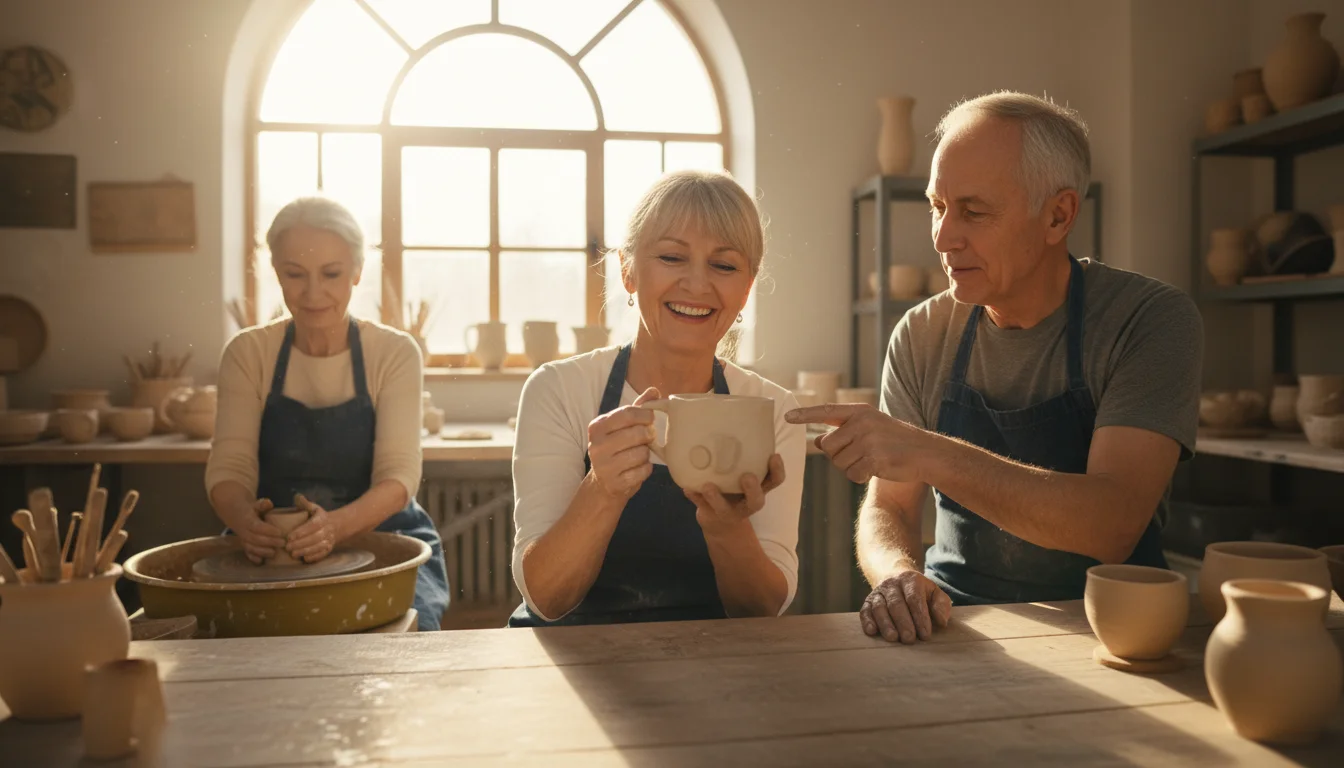
Finding Beauty in the Imperfect
That lopsided bowl changed everything. I started to approach the wheel not as an adversary, but as a partner. My search for meaningful retirement activities had led me to this lump of mud, and it was teaching me patience. I started talking more with Sam, with Maria, with the other students. We weren’t just a class; we were a small community, a fellowship of the clay-spattered. We’d share tips on glazes and celebrate each other’s small victories—a centered pot, a smooth rim, a successful firing.
I realized these wonderful senior hobbies aren’t just about the activity itself. They are about the connection. They are about finding your tribe. I learned that Sam had taken up pottery to keep his hands nimble. Another woman, a retired teacher, said it was the only time her mind truly went quiet. We were all there for different reasons, but we were all rediscovering a part of ourselves.
The engineer in me was slowly being replaced by an artist—or at least, a craftsman. I learned to love the process. The feel of the spinning wheel under my palms, the mesmerizing way the walls of clay would rise, thin, and take shape. I even learned to embrace the imperfections. A fingerprint left in the glaze, a slightly uneven lip—these weren’t mistakes anymore. They were marks of the human hand. They were what made each piece unique. For a man who had lived by tenths of a millimeter, this was a revolution.
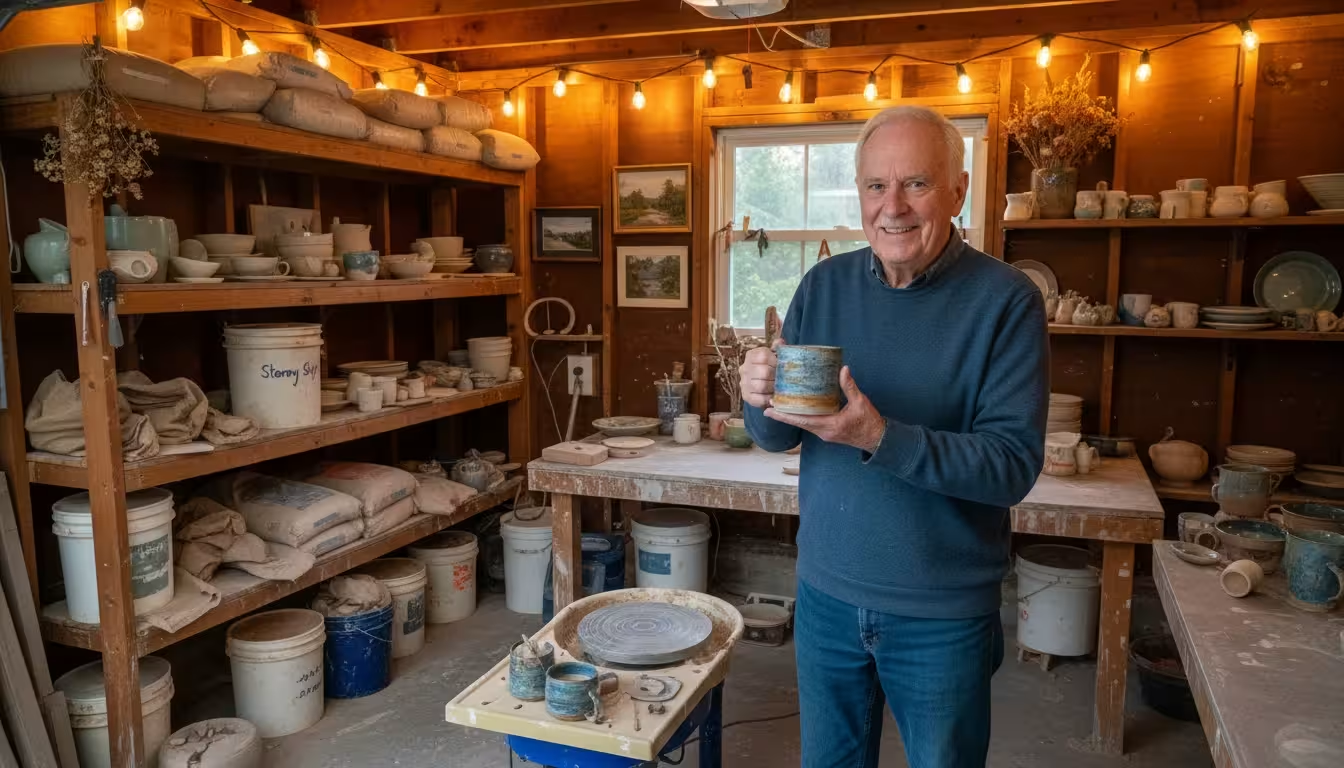
From a Clean Garage to a Creative Haven
That was four years ago. The six-week course turned into a year-round membership at the studio. My Tuesday golf game is a distant memory. My garage, once a temple of orderly tools, now has a corner that is my own little studio. There’s a potter’s wheel Eleanor bought me for a subsequent birthday, shelves lined with bags of clay, and buckets of glaze with names like “Stormy Sky” and “Autumn Moss.”
The shelves are also filled with my creations. There are mugs my grandkids use for hot chocolate, each one a little different. There are planters on our patio, vases filled with Eleanor’s flowers, and serving bowls we use for family dinners. My work isn’t perfect, not by a long shot. But it’s real. It’s useful. It’s made with my own two hands.
So, for those of you standing at the start of retirement, feeling that strange mix of freedom and emptiness, my advice is this: Where to begin? Begin with something that scares you a little. Begin with something you’re sure you’ll be bad at. The point isn’t to find something to fill your time; it’s to find something that fills your soul. Exploring new hobbies after retirement isn’t about perfecting a skill. It’s about being willing to learn, to fail, to get your hands dirty, and to discover that the most beautiful things in life are often perfectly imperfect.
For expert guidance on senior health and finance, visit Benefits.gov, National Institute on Aging (NIA), Centers for Disease Control and Prevention (CDC) and Medicare.gov.
|
Fact-Checked Content
Our editorial team reviews all content for accuracy and updates it regularly. Learn about our editorial process →
|


